The iPhone 12 & 12 Pro Review: New Design and Diminishing Returns
by Andrei Frumusanu on November 30, 2020 8:30 AM EST- Posted in
- Mobile
- Apple
- Smartphones
- Apple A14
- iPhone 12
- iPhone 12 Pro
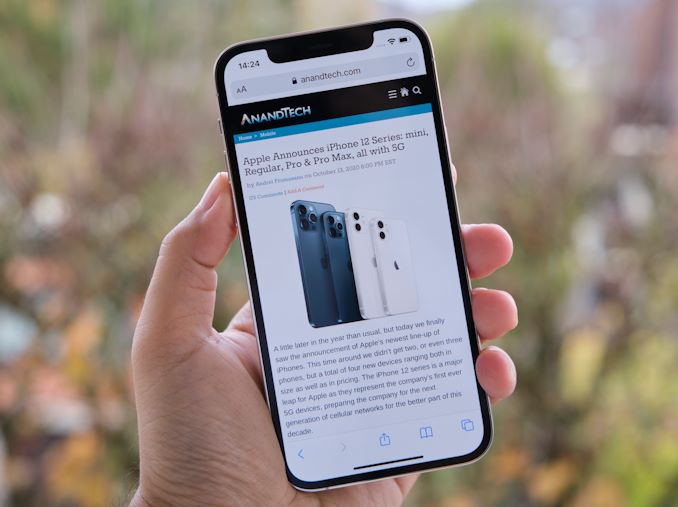
The new iPhone 12’s have been out for a while now, and while we’ve had our hands on them for a few weeks, Apple’s news bombardment of the new Apple Silicon announcement and release of new Apple M1 Mac devices has meant the iPhones have had to be put on the back burner for a little while.
Having already covered Apple’s new A14 architecture in-depth in our coverage of the M1, it’s time to fill in the missing pieces for the actual new generation of iPhones.
The new iPhone 12 generation of devices mark a new design restart for Apple, moving away from the design that had been started with the iPhone X in late 2017. Re-gaining the flat side-frame look that was originally found in past iPhone generations of the 4, 4S, 5 & 5S series, Apple is making the old new again.
The new iPhone 12 series is also Apple’s widest range release ever, with a total of four new iPhones: the iPhone 12 mini, a new compact form-factor at the lower range, the iPhone 12, the “standard” iPhone part, and continuing to offer the Pro models in the form of the iPhone 12 Pro and 12 Pro Max. We’ll be focusing on the iPhone 12 and 12 Pro for today’s review.
| Apple iPhone 12 Series Specifications | |||||
| iPhone 12 mini | iPhone 12 | iPhone 12 Pro | iPhone 12 Pro Max | ||
| SoC | Apple A14 Bionic 2 × Firestorm 4 × Icestorm |
||||
| DRAM | 4GB | 6GB | |||
| Display | 5.42" OLED 2340 x 1080 625nits peak |
6.06" OLED 2532 x 1170 625nits peak |
6.06" OLED 2532 x 1170 800nits peak |
6.68" OLED 2778 x 1284 800nits peak |
|
| Size | Height | 131.5 mm | 146.7 mm | 160.8 mm | |
| Width | 64.2 mm | 71.5 mm | 78.1 mm | ||
| Depth | 7.4 mm | 7.4 mm | 7.4 mm | ||
| Weight | 135g | 164g | 189g | 228g | |
| Battery Life | 2227 mAh -12% video vs 11 |
2815 mAh +-0% vs 11 |
2815 mAh -5.6% video vs 11 Pro |
3687 mAh +-0% vs 11 Pro Max |
|
| Wireless Charging | MagSafe Wireless Charging up to 15W Qi Compatible (7.5W) |
||||
| Rear Cameras | Main | 12MP 1.4µm 26mm eq. f/1.6 Optics OIS |
12MP 1.7µm 26mm eq. f/1.6 Sensor-shift OIS |
||
| Tele- Photo |
- | 12MP 52mm eq. f/2.0 OIS |
12MP 65mm eq. f/2.2 OIS |
||
| Ultra- Wide |
12MP 13mm eq. f/2.4 |
||||
| Front Camera | 12MP f/2.2 |
||||
| Storage | 64GB 128GB 256GB |
128GB 256GB 512GB |
|||
| I/O | Apple Lightning | ||||
| Wireless (local) | 802.11ax Wi-Fi with MIMO + Bluetooth 5.0 + NFC | ||||
| Cellular | 5G (sub‑6 GHz and mmWave**) Gigabit LTE with 4x4 MIMO and LAA **US models only |
||||
| Splash, Water, Dust Resistance | IP68 up to 6m, up to 30 minutes |
||||
| Dual-SIM | nano-SIM + eSIM | ||||
| Launch Price | 64 GB: $699 £699 €809 128 GB: $749 £749 €859 256 GB: $849 £849 €979 |
64 GB: $799 £799 €909 128 GB: $849 £849 €959 256 GB: $949 £949 €1079 |
128 GB: $999 £999 €1159 256 GB: $1099 £1099 €1279 512 GB: $1299 £1299 €1509 |
128 GB: $1099 £1099 €1259 256 GB: $1199 £1199 €1379 512 GB: $1399 £1399 €1609 |
|
Starting with the innards, the new iPhone 12 series are powered by Apple’s new A14 SoC. The new chip is powered by two high performance cores and four power efficiency cores, as well as a 4-core GPU. We’ll be going into a bit more details on the SoC in a later page, but by now based on our coverage of the Apple Silicon M1, we should also be familiar with the capabilities of the smaller A14 sibling.
In terms of DRAM, Apple fits the iPhone 12 mini and iPhone 12 with 4GB of LPDDR4X, whilst the Pro models are getting a larger 6GB pool. NAND storage this generation hasn’t changed all that much for the lower-tier models which are sticking to 64GB base, with configuration upgrades 128 or 256GB, however the Pro models do now start out with a 128GB base model, with larger configurations at 256 and 512GB.
The big new feature of this year’s new iPhones is the 5G connectivity. Thanks to the usage of a Qualcomm sourced modem, Apple is now enabling 5G connectivity across its whole new range. It’s to be noted that for users in most countries, this still only means sub-6GHz 5G NR as mmWave antennas are only deployed in the US models. What’s also interesting is that it seems that these mmWave modules are designed by Apple themselves and not sourced from Qualcomm – which makes the new iPhones the first devices on the market to have such a non-Qualcomm antenna solution.
In terms of design, the new iPhone 12 are a mix of the old and the new. What’s new on all new devices is their screens, with the “standard” sized models we’re reviewing here having 6.06” 2532 x 1170 OLED displays. What’s particularly interesting here is of course the fact that the iPhone 12 shared almost the same display specifications as the iPhone 12 Pro, something which couldn’t be said of last year’s iPhone 11 which still came with a lower resolution LCD display and a generally different form-factor as the iPhone 11 Pro.
The new iPhone 12’s only difference to the 12 Pro in terms of screen specifications is that it doesn’t get as bright as the Pro model, being listed at 625 vs 800 nits peak brightness.
On the back of the phones, although hard to notice on these white models, one thing of note besides the different camera setup is that the Pro model again comes with a frosted glass back cover whereas the regular iPhone 12 still uses a glossy glass finish.
The new design is quite a bit of departure from the past 3 years of iPhones. Apple had noted that they’ve reduced the bezel of the screen while still maintaining a symmetric look on all the sides (besides the notch of course). This gives the visual impression that the new iPhone 12/12Pro is narrower than the iPhone 11 Pro, even though that’s not actually true – though it is a few millimeters taller.
I’m still not too sure what to make of Apple’s decision to go back to a flat-edged frame as on older generation iPhones. To be honest the very first impression upon unboxing the new devices I had was that this was just a horrible design and a massive step backwards in terms of ergonomics. Although as I noted the new phone’s width isn’t wider than that of the iPhone 11 Pro, because it has right angle edges, it actually has a larger circumference compared to the rounded-off iPhones, and it translates into a larger-feeling device even though they’re the exact same form-factors.
That first bad impression isn’t quite as prevalent after a few weeks of usage as you can still somehow get used to it, but as soon as I go back to the 11 Pro or another rounded frame phone it’s immediately striking how much better it feels in the hand.
In terms of button layout, we’re seeing the same setup as previous generation iPhones, two volume buttons on the left side beneath a silent mode switch, with the power button on the right side – so nothing inherently new there. It’s interesting that even now several years after the first under-screen fingerprint sensors and quite mature and accurate implementations out be competing vendors that Apple still hasn’t attempted it on the iPhone line-up – I think many would like to see the return of TouchID in such a manner, at least as an option alongside FaceID.
The iPhone 12 Pro comes with a steel frame with a special mirror finish, while the iPhone 12 comes in a matte aluminium frame build. Apple has been using steel frames for quite some time now with the iPhone X designs, but it hasn’t been quite as striking as the design here on the new 12 Pro series. It’s a highly subjective matter and many may feel that the steel frame is more premium, but I do vastly prefer the aluminium variant due to the fact that it’s nowhere near the fingerprint magnet – just looking at the 12 Pro I have here on the desk looks quite disgusting and messy while the 12 at least appears to be clean.
Another big difference between the two phones is the fact that the steel frame (alongside the added camera) of the 12 Pro adds in another 25g to the weight of the phone to 189g vs 164g, a difference that is very much immediately noticeable.
While I prefer the matte frame of the 12, the frosted glass on the 12 Pro is just simply much better and feels much more premium to the regular glossy finish on the 12 – again, because of fingerprints and dirt.
For the new iPhone 12 mini, 12 and 12 Pro, the main camera doesn’t appear to change in terms of sensor versus the iPhone 11 series, although that’s still perfectly fine. It’s a 12MP sensor with 1.4µm pixels and full sensor dual-pixel coverage, however the new camera modules employ a larger f/1.6 aperture lens which allows for 27% more light.
For the iPhone 12 mini and iPhone 12, the second camera module is the ultra-wide, which again appears to be the same as on the 11 series, featuring a 12MP sensor with an f/2.4 aperture and a large 13mm equivalent or 120° angle FOV. The novelties for this module this year lie on the software side of things with Apple now enabling various new features such as computational night mode on this camera as well.
For the iPhone 12 Pro, the third camera module is a telephoto unit with again an apparently similar module to last year, a 12MP sensor on an 52mm equivalent (2x optical magnification) optics with f/2.0 and OIS.
The Pro models also receive what Apple calls the LIDAR module, which is essentially a ToF sensor coupled with a structured IR light emitter, allowing for 3D depth sensing.
The iPhone 12 Pro Max has a more interesting camera setup, however we’ll be reviewing this at a later date.
In general, my impression and design of the iPhone 12 and 12 Pro are two-fold, depending on the model.
Starting off with the 12 Pro, I generally don’t like the new design as the right-angle frame edges and mirror finish are both not very ergonomic and also quite messy. It’s a highly subjective opinion but it just doesn’t do it for me at all, and I vastly prefer the 11 Pro over this, even with the larger screen bezels.
Whilst I still don’t like the edges on the iPhone 12, because it’s a lighter phone and the general better feel of the matte aluminium, it’s actually the phone I prefer this generation. I would have liked the matte frosted glass on the back as well, but I guess you can’t have everything. What’s important for the iPhone 12 is that this year it’s major upgrade in terms of display compared to the iPhone 11, sporting a much higher resolution and also switching over from an LCD to an OLED. This was a major gripe of mine with the 11 and now the 12 essentially almost matches the display quality of the 11 Pro and 12 Pro devices, which is something that can’t be understated.


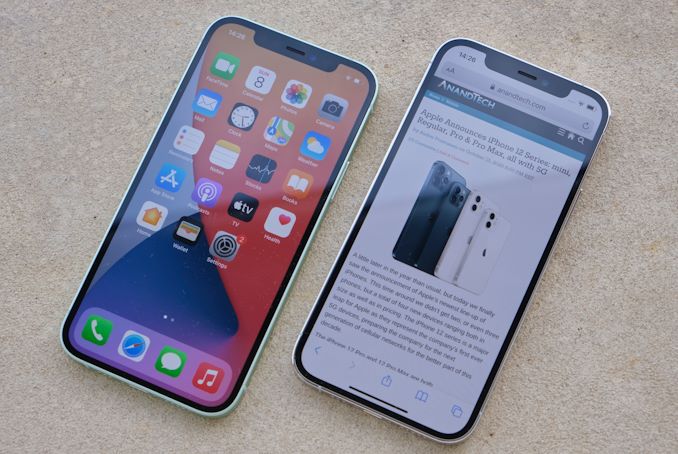
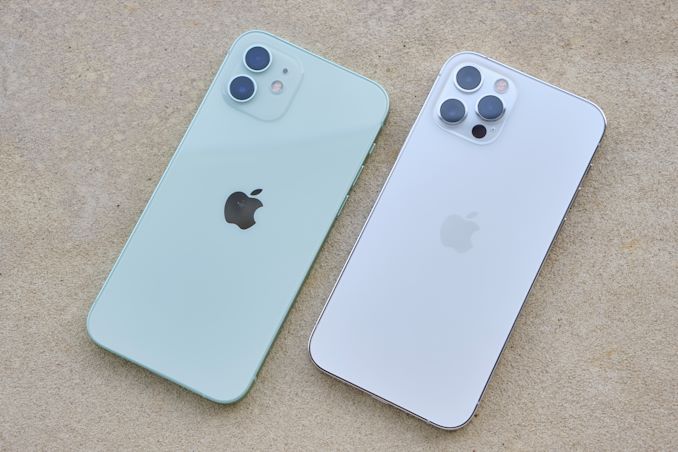
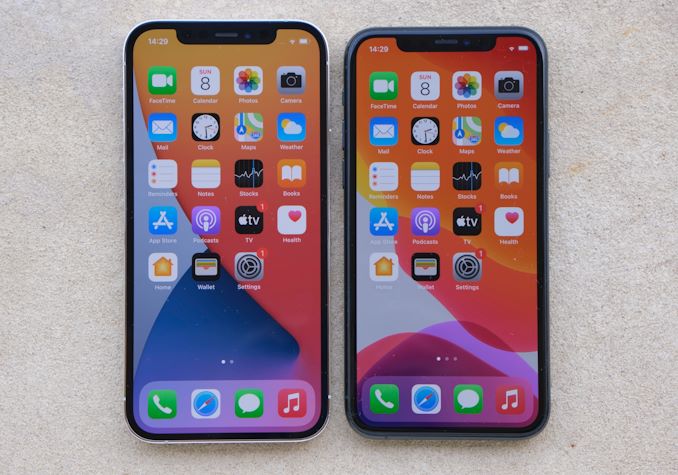


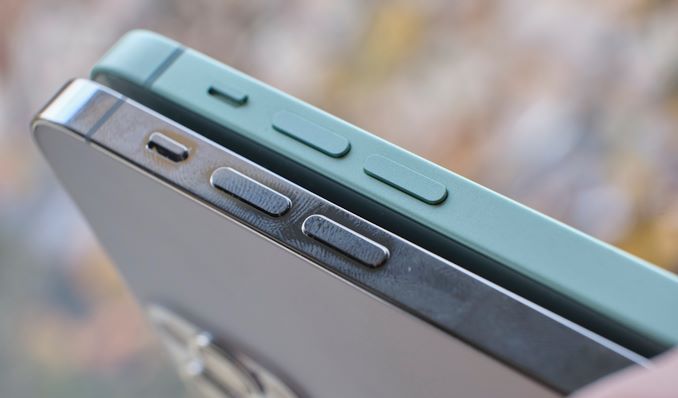
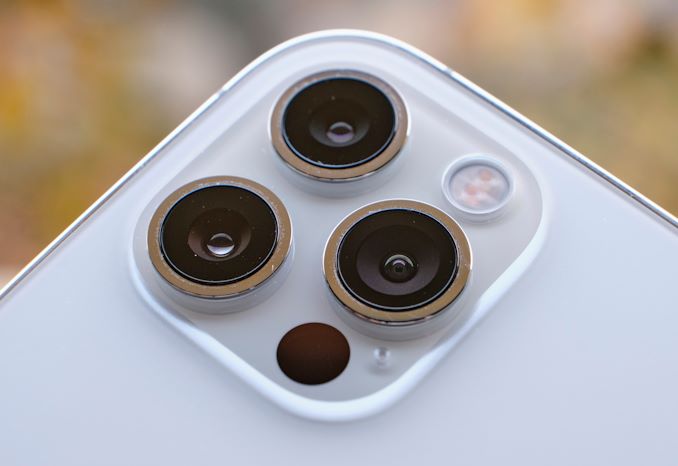








101 Comments
View All Comments
anshelanancy - Wednesday, December 2, 2020 - link
This iPhone 12 is really well designed but high cost and released in some countries normally we can buy it online. I want to buy this but it isn't released in my country. I must buy this phone but this time I am so much busy with my office work https://accountancyseekers.co.uk/ here doing work as a marketing executive since 2017.Byte - Tuesday, December 15, 2020 - link
I kept my X to play games on and found it hurts to hold the X now because the the whole side feels sharp now. Am i weird?Laga Goteborg - Thursday, June 24, 2021 - link
iPhone 12 LCD screens are much tougher than before, we had cases that glass was intact but LCD under glass was shattered. However we could always fix the problem via https://www.LagaiPhone.se/KPOM - Monday, November 30, 2020 - link
The 12 mini hits the sweet spot for design and features this year, and I’m surprised it isn’t selling better (apparently Apple is seeing more demand than expected for the Pro and Max and somewhat less for the 12 and mini).I agree that the 12 Pro is a bit heavy and the new design isn’t as easy to hold as the 11 Pro. But the mini is only slightly bigger than the original iPhone SE/5/5s, and is the most comfortable phone to hold that I’ve seen in years.
Bob Todd - Monday, November 30, 2020 - link
I assume some of it is just that people have gotten accustomed to gargantuan phones over time and it can be a bit of a shock to scale back down. After holding the 12 mini in one hand and my OnePlus 6 in the other, I was certainly hesitant to give up that much screen. It was mostly fond memories of my Essential Phone's form factor that pushed me to choose the mini. My wife on the other hand is eyeing the regular 12 for this exact reason. She's accustomed to the size of her OnePlus 7T and the progressively larger phones that have landed her there.lmcd - Tuesday, December 1, 2020 - link
I personally think that it's due to upgrade cycle timing -- why buy a 12 mini if you just bought an SE 2020?I think a lot of people in that niche picked up an SE and also are already the type to hold onto their phones longer.
techconc - Monday, December 7, 2020 - link
Agreed. I have the 12 Pro, but after feeling the 12 mini in my hand (and in my pocket), I think I may go mini next time.ikjadoon - Monday, November 30, 2020 - link
The Mini is limited to 12W peak MagSafe, unlike “up to 15W” on all the other models.https://support.apple.com/en-us/HT211829
Jetcat3 - Monday, November 30, 2020 - link
12W peak with a 2227 mAh cell is non issue in my opinion.Andrei, in your testing did you notice increased black levels with low APL’s at brightness levels between 0-40%?
ikjadoon - Monday, November 30, 2020 - link
I don't think a single person genuinely cares or notices peak charging rates: minutes at best? Though the first page chart is a little incorrect.On displays, I'd be much more interested in power consumption of the two panels, so we can compare with the 11 Pro.